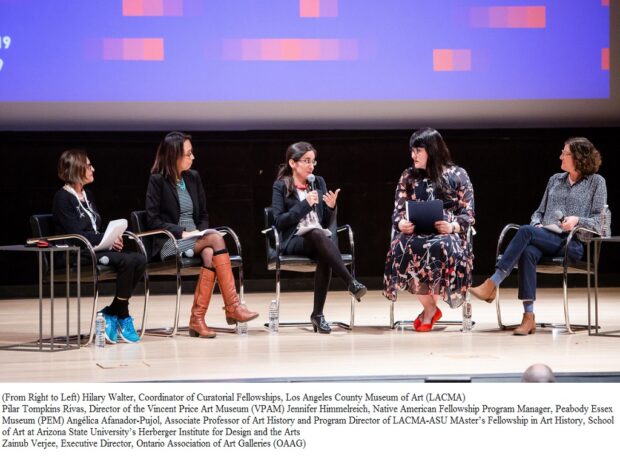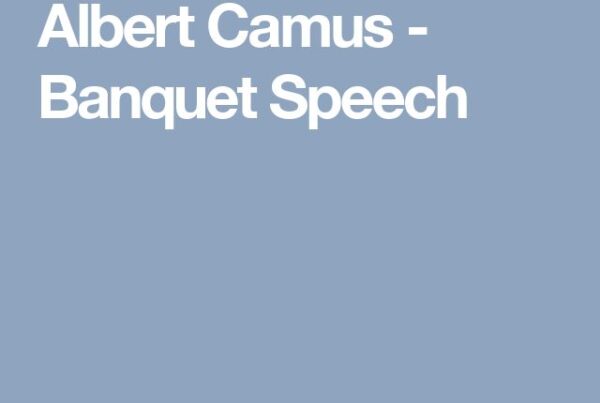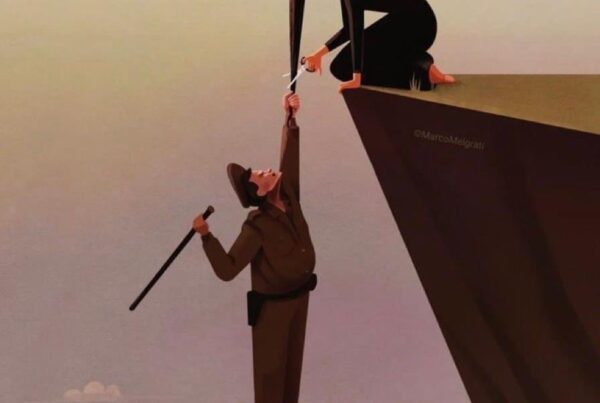Zainub Verjee: “Don’t reduce Diversity to an HR issue! It has far more complex and nuanced history.”
BY ISMAILIMAIL

Zainub Verjee was invited to speak at the prestigious Association of Art Museum Curators (AAMC) and AAMC Foundation conference in New York City recently.
The AAMC is the only international organization dedicated to advancing the curatorial profession, held its 18th Annual Conference and meeting in New York City welcoming attendees from nine countries, and 38 states, featuring 35 speakers from 34 organizations.
Seeking to heighten public understanding of the curator’s role in art museums, among others it offers recognition of excellence within the field; set ethical and professional standards and offers research and scholarship. This work of AMMC supports our more than 1300 members from over 400 institutions located in 18 countries, as well as their non-member communities of curators and art organizations worldwide.
The session engaged with the issue of diversity. Art organizations hold the artistic legacy of humans across time and geography. The staff within them, specifically the leadership roles of curatorial, conservation, and education, dedicate their professional careers to the scholarly work of collecting, preserving and interpreting these objects for audiences now and in the future. However, what happens to the story of art if the staff that are responsible for its display and care within these institutions are homogeneous? In order for art organizations to be more representative of the communities they serve and include diverse perspectives into the history of art, they must develop programs that promote access and inclusion for those who have been historically excluded.
Pointing to the study on diversity in Canadian Galleries, Zainub offered a historical framework to understand the issue of Diversity and how identified why the politics of identity of the 1980s is making a return in the second decade of the 21st Century. In the stimulating presentation Zainub pointedly said: “In the end, it is the boardrooms of these institutions that must be held accountable. They set conditions of representation within the galleries’ programs through their hiring. It, perhaps, should come as no surprise that diversity in the boardrooms of Canada (a population somewhat equivalent to the pool of candidates for the boards of, at least, the larger galleries) is similarly unrepresentative of Canada at large. What I am implying in this slide: Diversity is not an HR issue! It is far more complex and nuanced.”
She remarked, “the irony of the moment is not lost on me! Since last four decades we still are continuing this conversation, despite the fact of making small headways in the 1990s wherein we thought the debate will be settling down soon. Look what happened at Whitney Museum of American Art Biennial of 1993! We continue to avoid the systemic issues that need to be addressed and as a result a false agenda of diversity and inclusion is put forth. It is crystal clear that this parroted Diversity and Inclusion agenda has nothing to do with Equal Opportunity, Social Equality or Affirmative action!”
Leading the voice of Canadian Art Galleries, Zainub Verjee, the Executive Director Ontario Association of Art Galleries (OAAG), spoke about OAAG’s leadership project: “Identifying significant gaps in cultural diversity at the Executive leadership levels and to prioritize a professional development strategy in responding to the concerns raised by provincial and federal art galleries, OAAG created a mentorship program with funding for three years from the Ontario Trillium Foundation. The aim was to help culturally diverse arts professionals, including indigenous and visible minorities, accelerate their transition to leadership positions.”
source: ismailimail


